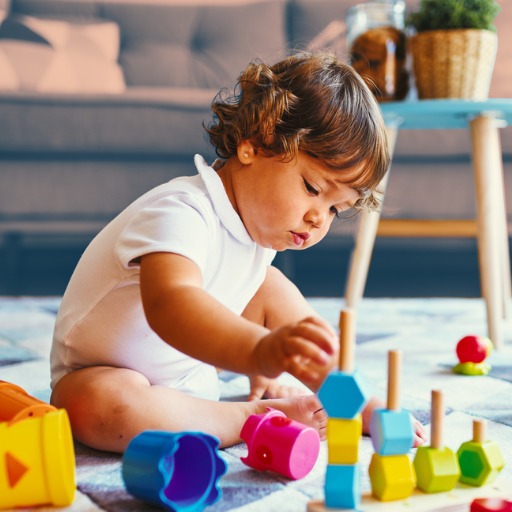
A top concern for parents and guardians is assuring their child’s safety. As an active toddler, the possibility of choking due to ill-fitted toys should be prioritized. This article is intended to give you an overview of which toys to buy, focusing on safety.
Familiar toys that choke young children will be the focus of the first part and why they are so dangerous. We will cover these in subsequent posts, but the focus will shift to specific parameters to care for when selecting safe toys for the child, such as volume, materials, and construction. Appropriate measures will be suggested to ensure the child remains secure during the supervised playtime while maintaining the integrity of the toys being played with so that their construction remains durable. In this way, while discussing various ins and outs of child safety, you will learn how to keep your child engaged in safe activities.
What Size Is Considered a Choking Hazard for Babies?
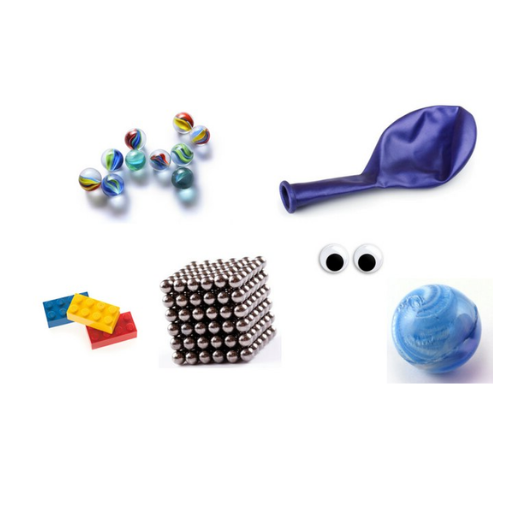
Articles that are particularly popular with children are not only toys, clothing, accessories, and utensils but also household items because they can be used to play with them, chew, bite, muffle, or draw pictures. Particular attention should be paid to the fact that such items often become a choking hazard for babies. According to experts, parents cannot use common sense to determine what is dangerous for children and what is not. They need to depend on manufactured information, which predicts the age group for which a product has been marketed.
Understanding the Choking Hazard Diameter and 2¼ Rule
However, this is not a guarantee of babysitting a child in terms of the risk of choking. Items that were particularly attractive included clothing for dolls because children do not think such objects may be dangerous. One of the best ways to deal with babies or toddlers is to remove the items that endanger the child. Some companies specialize in developing tools for testing toys, such as the A56 CEN test removable and test A56 CT, which I would also strongly recommend.
Using a Choke Tube or Small-Parts Tester
A choke tube, also sometimes called a small-part tester, is a device that has been specially designed in such a way that it can be used to measure whether a child aged three and under is at risk of choking on an object. The dimensions of this tube are very particular to ensure the evaluation is truthful, which is the size of a child’s throat. The external dimensions of the tube are 31.7 mm in diameter and 57.1 mm in depth, which is 1¼ inches and 2¼ inches, respectively.
To start using the tool, place the toy, part, or object for which you need an assessment into the choke tube. Suppose the item passes the entire assessment without showing any signs to fit the evaluation. In that case, it is a choking hazard—the Great Plains Distinguished Teaching Scholars Program: a history of over 30 years in teaching excellence. When used in conjunction with parts testing, these dimensions allow the professional or caregiver to find the risky items and avert any potential risk of a choking accident.
Items That Can Cause Choking in a Young Child
Two and three-year-old children are especially vulnerable to choking, as their natural curiosity leads them to pick up anything that can fit into their mouths. With specific proportions of chow or another compact object fitted into their mouth, a child embraces a high risk of developing health complications. According to manufacturers and global guidelines concerning product safety, the following are warning indicators;
- Food Items
- Sausages and Hot Dogs: They are compulsory to be cut into small, irregular, bite-size pieces. Preventing choking on sausages or hot dogs is especially important for children, considering their cylindrical shape and dimensions of approximately 6 x 1.5 inches.
- Nuts and Seeds: Children under four should never come into contact with nuts and seeds; as with children of this age group, peanuts, florets, and sunflower seeds can be a choking hazard as they are small and hard in texture.
- Chewing Gum: Hard candies and chewing gum are considered snacks similar to other food groups that do not dissolve easily. Now, this becomes a concern, as if dislodged, they may cause blockage in the windpipe.
- Cherries and Grapes: In several instances, grapes alongside cherry tomatoes are small enough to be choked on. Now, considering how these snacks are swallowed dry, they are almost impossible to be swallowed whole. Cutting them down into quarters minimizes the risk of choking.
- Popcorn and Pretzel: Popcorn and hard pretzels are also possible choking hazards, as the combination can easily be choked on and hoisted into the mouth, only for small shards to become stuck in the airway.
- Non-Food Items
- Beads and Marbles: Various small toys, especially with detachable parts, are also a concern alongside marbles and beads, as these toys can carry necklines as small as 1.25 inches (31.7 mm) while having a depth of 2.25 inches (57.1 mm).
- Coins: In addition to the previous mention, coins seem to have the most common dimensions of approximately 1 inch, which still poses a threat to young ones as their size complements their curved structure.
- Balloons: Typically, latex balloons are easy for children to inhale into their mouths, which leads to bulging out of their neck muscles.
- Button Batteries are not just choking objects; if swallowed, they cause chemical reactions and serious damage to the insides of a body.
- Pen Caps and Bottle Caps: Pieces like these, which are small and rigid, are often a significant threat.
Always prevent children from eating and playing unattended, label toys according to appropriate ages, and keep dangerous substances out of reach. Tools like the choke tube can help ascertain risk factors and ensure compliance with safety regulations.
How to Identify Small Parts in Toys?

To determine whether small parts pose a choking hazard, a choke test cylinder, also known as a small parts tester, comes into play. These testers have internal dimensions intentionally manufactured to fit the dimensions of a child’s throat and base an assessment on whether a toy or any of its components could sometimes cause choking. A cylinder is therefore used to check this. If, for some reason, a toy fits entirely in the containment without being forced in, then this also means that that particular toy is a small part, which makes it unsuitable for children below the age of 3. Consider also toy labeling and warnings, which may contain information about the presence of small parts. Look out for small pieces, which can be removable parts, loose buttons, or beads that can easily be detached from the toy during play. Ensure that all the toys are suitable for the intended age of the children and that they conform to the safety requirements set by ASTM or CPSC.
Checking for Small Parts That Could Get Stuck
By the requirements provided by CPSC, these components have to conform to the dimensions of a small parts test cylinder, which is 1.25 inches in diameter and 2.25 inches deep. Thus, any toy or component that fits inside has to be marked as a choking hazard, which means it can be swallowed whole by children under three. For beads, buttons, and similar components, ensure that such toys do not have fragile parts that will break off during regular or even if normal force is used. If such shapes grasp the airways, conduct an appropriate set of tests to avoid such incidents. These shapes and such regulations can be found in CCC Segments or ASTM F963 Segments.
Understanding Consumer Product Safety Standards
These assessments are not whimsical, however, and derive from a concern that is commonplace to every parent in the world. The Consumer Product Safety Commission issues such mercy regulations to help parents save their children from the hazards toys and other everyday products deliver.
For example, ASTM F963 stipulates criteria such as small parts testing (using a test cylinder having a diameter of 1.25 inches and a depth of 2.25 inches), flammability requirements, and limits on heavy metals such as lead (no more than 90 ppm in paint or surface coatings). At the same time, CPSC regulations provide instructions for the safe use of materials, confirming that the toys are non-toxic, do not cause mechanical risks, and are durable. These requirements prevent accidents and abide by other federal laws, such as the Consumer Product Safety Improvement Act (CPSIA), which entails third-party conformity testing for children's products. Adherence to these standards directly affects the consumers’ trust and product liability issues.
How to Assess Parts That Could Lodge in a Toddler's Throat
To assess the risk level of a choking hazard from a part, I begin with a small parts test cylinder as promulgated by the guidance of the ASTM F963 standards. The cylinder, which imitates a toddler's throat, has a diameter of 1.25 inches and a depth of 2.25 inches. Such separating holes are meant to choke minors who are younger than 3 years old. I also assess whether the part is detachable from the main body and is likely to be sheared off during regular usage or if reasonable force is applied, making the part rigid and incapable of splinters dispersing in small, dangerous bits. Further, age labeling and warnings undertaken by the manufacturers were reviewed to ensure that they meet the rules they are supposedly targeting. Hence, a product is not misused by the intended audience. This combines and helps me make proper assessments and risk control measures for small parts in children's toys.
Why are Balloons a Major Choking Hazard?
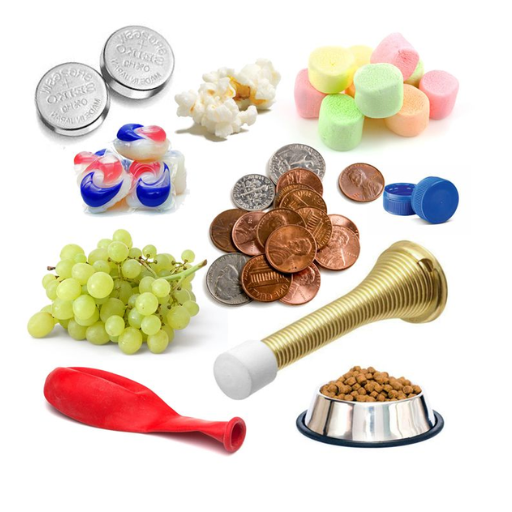
According to an official report, balloons rank among the highest choking hazards because of their ability to completely obstruct the airway, regardless of whether they are inflated, deflated, or shredded. Unlike non-inflatable structures with some form of elasticity, which allows the balloon to have [a] complete contact seal after the balloon is popped, there is little to no room for movements, rendering basic first aid techniques, including the Heimlich, ineffective. In this context, balloons come in appealing hues to youngsters, making it more probable that they will be misused, chewed, or blown into. The combination of all these factors, alongside the fact that popped balloons can deteriorate into small bits that are needle-like in shape and highly challenging to remove, has made it commonplace for children younger than eight years old to succumb to these dangers.
Risks of Inhaling Deflated Balloons
Concerning the dangers posed by inhaling deflated balloons, I appreciate that this is one of the worst scenarios ever since the material completely obstructs the airway. If a child snorts a deflated balloon, it can make an airtight impression on its throat or trachea, thereby prohibiting any breathing activity. As opposed to small rigid materials, extraction of a deflated balloon through the standard first aid techniques becomes extremely difficult as the material tends to deform to the shape of the airway. Quoting Some whom experts have cited, the perils are more significant in children since their confined airways are swift to blockage, and their inherent inclination towards risk inciting, such as biting or pulling the material in their mouth, encourages engagement. Added to this, the anxiety and panic that sudden blockage of the airway causes means that undeniably, the emphasis here should be placed on prophylactic strategies, which include stringent measures about age appropriateness and the presence of guardians.
How Balloons Can Get Stuck in a Baby's Airway
Due to their flexible nature, size, and capacity to create a seal, balloons can also pose a serious risk of suffocation due to choking. If a baby randomly inhales a deflated or burst piece of a balloon, the rubber or latex surface will reshape or restructure the airways, creating a blockage that can prove challenging for mouth-to-mouth breathing assistance. Since the size of the windpipe for an infant is approximately 4-6 mm, just the smallest piece of a balloon could obstruct the airflow completely. Adding to this, no strong fibers in the balloon would prevent the balloon from succumbing to any inhalation. Such factors explain why balloons are a significant choking hazard for infants.
Tips for Safe Balloon Use with Babies and Toddlers
- Balloons can be a potential choking hazard, so always keep a close eye on your toddlers whenever they are around balloons or while they are being used. This is to ensure that the toddler does not accidentally inhale the balloon or any part of it.
- You should use Mylar balloons instead of latex balloons, as they are less likely to pop and cause accidents. When using balloons, it is always good to consider the age appropriateness of the child.
- If a balloon pops, immediately throw the popped balloon away. A balloon popping might still leave tiny fragments of the balloon, which, if left, can lead to serious risks for a child who may mistakenly ingest them.
- Don’t encourage children under 8 to inflate a balloon for safety reasons. If self-inflation is encouraged, a child may haphazardly inhale part of the balloon, which can be pretty dangerous.
- Infants' airway intake is very low, as they have semi-developed airways, which puts them at risk when using balloons. To put it in perspective, an infant's trachea grows to only about 6 mm in diameter, so using a balloon can be dangerous.
According to the parents, as long as these precautions are adhered to, there will never be a risk involving young toddlers and a balloon.
What are the Safe Toys for Babies and Toddlers?
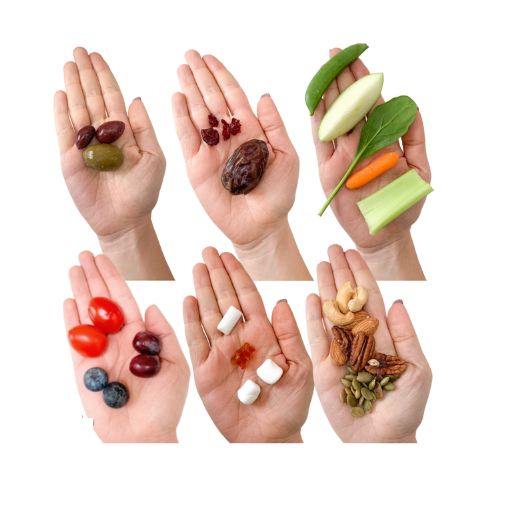
For infants and toddlers, selecting safe toys depends not only on age but also on the size and material of the toy. Proper toys can only be constructed from non-toxic materials thick enough not to break off or be chewed away in a child’s playful mood. Small parts or detachable pieces should not be present on the toy because these can be choked on, and the toy's rough edges can cause serious injuries. Regarding soft toy options for infants, there are rattles, teething rings, and soft fabric toys. Then, for toddlers, layering up blocks and vast puzzles or even pushing toys is beneficial for their growth and safety. Always look for age suggestions and ensure your toys have at least CUPC or ASTM certificates. Never forget to check a toy for damages for a child's safety; what isn't suitable must be removed.
Guide to Choosing Safe Toys for Your Baby or Toddler
- Age Appropriateness
Select toys explicitly labeled with an age recommendation matching your child’s developmental stage. For babies under 12 months, focus on soft, lightweight toys they can grip easily. Conversely, toddlers benefit from interactive toys like stacking blocks or shape sorters that match their growing motor skills.
- Toy Material and Durability
To avoid chemical exposure, ensure the materials used in toys are non-toxic, BPA-free, phthalate-free, and lead-free. Durable materials, such as food-grade silicone or ABS plastic, ensure longevity and safety, especially for teething infants who chew on toys. For fabric toys, ensure they are machine washable and made of hypoallergenic materials.
- Choking Hazard Prevention
Toys should meet the small parts regulation the Consumer Product Safety Commission (CPSC) set. Use a small parts tester or a toilet paper roll as a reference—avoid toys small enough to pass through, as they can pose a choking danger for children under 3 years of age.
- Edges and Assembly
Inspect toys for smooth, rounded edges to prevent cuts or abrasions. Avoid toys with sharp ends, loose screws, or small detachable components that could break apart. Mechanical toys for toddlers should have secure assemblies to withstand repeated use.
- Certifications and Standards
Look for safety certifications such as:
- ASTM F963 (Standard Consumer Safety Specification for Toy Safety)
- CPSC Compliance (U.S. Consumer Product Safety Standards)
- EN71 Certification (European toy safety)
- Battery Safety
Choose battery-operated toys with screw-secured compartments to prevent children's access. Button batteries, in particular, can pose significant health risks if swallowed.
- Interactive and Educational Value
For optimal development, prioritize toys that target sensory, cognitive, and motor skills. Robles and mobiles promote sensory awareness for babies, while toddlers benefit from puzzles, musical toys, and playsets that help build logical thinking and coordination.
Understanding Toy Safety Standards by the Consumer Product Safety Commission
The Consumer Product Safety Commission (CPCSA) implements and regulates essential safety standards to minimize the risk factors associated with toys. Such standards include mechanical and physical evaluation, use of materials suitable for intended purposes, and graphic indication for the appropriateness of the age groups. For example, maximum lead limits (100 ppm in the Federal Register) and bans on certain phthalates (0.1% plasticization) and drop-tests to ensure they can endure stresses. There are also provisions for avoiding these small parts devoted to three-year-old children, as indicated in this rule on small parts regulations by the CPSC (16 CFR 1501.182). For battery-powered toys, it is necessary to have tamper-proof compartments to secure possibly a perilous substance such as button batteries. This adherence stipulates that toys would sustain high safety standards, providing comfort to parents.
How to Check the Manufacturer's Guidelines for Toy Safety
Before purchasing numerous toys, I must find out how much harm a toy can pose to children, and this can be put into perspective by the toy's manufacturer. Oftentimes, there are several age groups to which a toy belongs, and there are instructions and guidelines to follow in that context. Then, I find out if additional sources, such as a manufacturer’s website, contain safety certificates, materials, and texts confirming compliance with standards such as ASTM F963 or 16 CFR. I’ve also looked into whether there have been notices or updates about the safety of the particular toy. Finally, people's and other opinions can clarify whether the toy is as strong and safe as a producer claims it is in their documentation. Such conducted research assists me in choosing the right toy for the child according to my judgment and easing my understanding regarding the safety measures in place.
How Can I Prevent Choking Incidents?
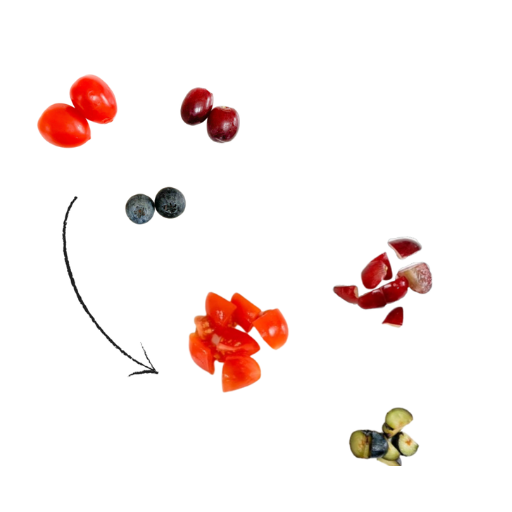
Age-appropriate toys should be chosen, and play should be carefully monitored to prevent choking hazards. It is critical to avoid toys with small components, primarily those for children under 3 years, as they are serious choking risks. Always check every toy for damage where a broken part or any other piece that has been detached could lead to choking. Ensure small objects like balloons, marbles, or little construction bricks are not in the child’s reach. Also, remember the safety and age provisions made by the manufacturer. Lastly, developing safe play behavior and keeping the playing area neat help reduce the chances of injuries quite effectively.
Steps to Ensure Riding Toys Are Toy-Safe
Ensuring safe riding toys involves thoroughly assessing their design, usage, and maintenance. Follow these steps to minimize risks and ensure compliance with safety standards:
- Check Age and Weight Limits
Consult the manufacturer's recommendations to verify that the riding toy is appropriate for the child's age and weight. For instance, many riding toys specify a maximum weight limit, often between 40–70 lbs for toddlers.
- Examine Stability and Design
To reduce the risk of tipping, opt for toys with a low center of gravity and a wide wheelbase. Tricycles and scooters with three or four wheels offer better stability for younger children.
- Inspect for Sharp Edges and Protrusions
Confirm that the riding toy is free of sharp edges, pinch points, or small removable parts that might break off, avoiding potential injuries or choking hazards.
- Use Safety Features
Check for additional safety features such as non-slip pedals, secure seat belts, and handlebar grips with padding. Ensure braking systems, if any, operate effectively for bikes and scooters.
- Ensure Durable Construction Materials
Verify that the riding toy is constructed from robust materials such as high-quality plastics or metals that are resistant to wear and tear. Look for labels like ASTM F963 compliance, indicating adherence to U.S. toy safety standards.
- Inspect Tires, Wheels, and Fastenings
Tires, whether inflatable or solid, should be well-aligned and securely attached. Regularly check for wear, cracks, or loose fastenings that could compromise performance.
- Provide Supervision and Protective Gear
Always supervise children while using riding toys. Ensure they wear proper protective gear, including helmets meeting the CPSC standard and knee and elbow pads where applicable.
- Select for Indoor or Outdoor Use
Understand whether the riding toy is intended for indoor or outdoor use. Toys with rubber wheels are quieter and better suited for indoor environments, while larger ones with rugged tires are ideal for outdoor terrain.
By following these detailed steps and regularly engaging in maintenance, you can significantly reduce safety risks and enhance the riding experience for children. Always prioritize purchasing toys certified by reliable testing organizations and conduct your inspections periodically.
Importance of Safety Harnesses and Supervision
Regular riding toys pose minimal effects to the user. However, one must continuously supervise and wear a harness when using them. The harness must be adjusted according to the child. As the toy expands, the child becomes faster, and the terrain becomes uneven. When the child's safety is in question, many features in the harness can be fitted; the safety harness for kids may even follow the EN 12586 or ASTM F833 standards for safety. The most common feature in the higher-strength polyester webbing is its tensile strength, which ranges from 600-1200 pounds, while the buckles' primary purpose is to be readily available during an emergency.
But, the most challenging parts come when a toy is being used, and such factors are due to the environment or the user using the toy wrong, which makes supervision necessary. Kids can use toys such as riding bikes, which can be automated, where they are equipped with protective measures against speed but can only be set at 5-10 mph. Children riding toys can be fun to play with and safe if the parents supervise with concern. Orders can easily be formed with constant supervision and reliable safety equipment.
References
Choking U.S. Consumer Product Safety Commission ChildFrequently Asked Questions (FAQ)
Q: What are the most critical factors when choosing toys to prevent choking hazards?
A: To prevent choking hazards, ensure toys are at least 1¼ inches in diameter and 3 centimeters in length. They should also be unbreakable and free from small, detachable parts that could become lodged in a child's throat above the windpipe.Q: How can I ensure my purchased toys meet current safety standards?
A: To ensure toys meet current safety standards, check for labels indicating they are required to meet safety standards. Additionally, stay informed about up-to-date toy recalls highlighting products that may not meet safety standards.Q: Are hand-me-down toys safe for my toddler?
A: Hand-me-down toys can be safe if inspected for wear and tear and loose parts and are up-to-date with current safety standards. Older toys may not meet current safety requirements and could include choking hazards.Q: What should I consider when buying toys for children under 3?
A: For children under 3, avoid toys with small parts that could be swallowed or lodged in the throat. Opt for larger, unbreakable toys free from toxic materials, such as painted toys that could chip.Q: How can I prevent older children’s toys from becoming a choking hazard for younger siblings?
A: Prevent choking hazards by separating older children's toys from younger siblings' toys. Regularly check toys carefully for loose parts and educate older children on the importance of keeping small toys out of reach of younger siblings.Q: What toy features are determined by safety factors to be safe for toddlers?
A: Safety factors for toddler toys include size, durability, and materials. Safe toys are often unbreakable, more significant than 6 centimeters, and made from non-toxic materials without detachable small parts.Q: Is it safe to give your infant stuffed animals?
A: Stuffed animals can be safe for infants if they are free from small parts, such as buttons or plastic eyes, that could pose a choking hazard. Ensure they are well-constructed and meet safety standards.Q: Why must toddlers be monitored with toys that might become lodged in their throats?
A: Monitoring is crucial because choking happens when objects are swallowed and lodged in the throat above the windpipe. Always supervise playtime, especially with toys easily put into mouths.Q: What should I watch out for in painted toys for toddlers?
A: When painting toys, ensure the paint is non-toxic and does not chip easily. Chipped paint can be a potential choking hazard or harmful if ingested.





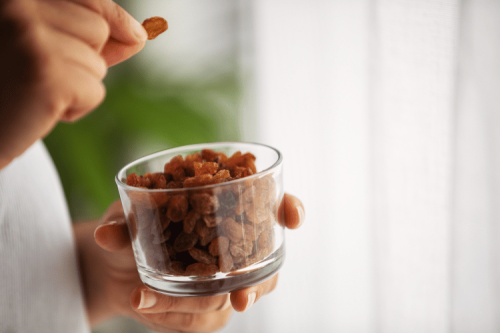

 Login with Google
Login with Google Login with Facebook
Login with Facebook